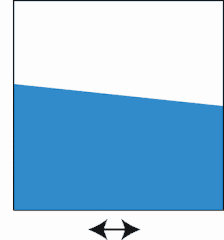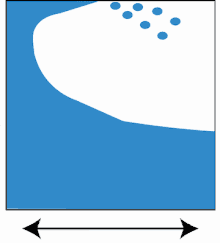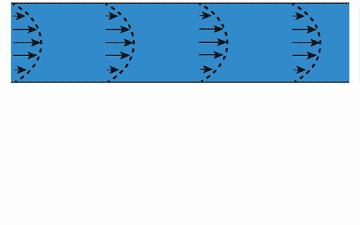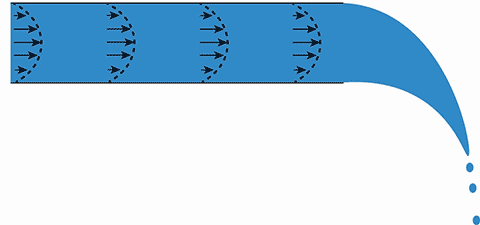1. What is a particle method?
Do you know what a particle method is? It is a method for fluid simulation, “fluid” meaning liquid and gas. We can simulate fluid behavior with the particle method on a computer. These days the particle method has been getting much attention in industrial and academic worlds because the particle method allows us to simulate very complex phenomena.
2. The particle method is simply simulates fluids.
There are various traditional methods, such as the finite difference method, the finite element method, the boundary element method etc. These methods have achieved outstanding success. However, there are still a lot of phenomena that are very difficult to simulate with the traditional methods. The particle method may become a solution for the problems.
Example 1
Let me give you an example. Figure 1 shows a tank sloshing. Sloshing is a fluid phenomenon in a container. If the container is oscillated by earthquake etc., the fluid is also oscillated. The phenomenon is called sloshing. Traditional methods can simulate fluid motion of small amplitude shown in Fig.1(a). However, it is very difficult for them to simulate large amplitude motion shown in Fig. 1(b) because of the large deformation, splitting and coalescence of fluid. If we apply traditional methods to the phenomenon, we need to carry out very complicated and advanced procedures. Besides, it will take a very long computation time in general.


Figure 1 Classification of difficulties in tank sloshing simulation
Using the particle method, we can easily simulate the complex phenomenon (see movie 1). This is because the particle method expresses fluid as groups of particles. The particles are calculation points and are able to move flexibly. There are no difficulties with large deformation, splitting and coalescence of fluid. Simulations of water splashing are very easy for the particle method.
Example 2
Then, let me give you another example. Figure 2 shows flows in a pipe. The flow shown in Fig. 2(a) is very easy for traditional methods to calculate. This is because the pipe is filled with fluid and the whole shape of fluid doesn’t change. However, the flow shown in Fig. 2(b) is very difficult for traditional methods because the liquid flows out from the pipe and we have to accurately simulate the large deformation of fluid surface, splitting and coalescence of fluid.

(Easy)

(Difficult)
Figure 2 Classification of difficulties in simulation of fluid in a pipe
(Arrows: velocity vector; Broken-lines: velocity distribution)
We can easily simulate this kind of complex and difficult flows using the particle method (see movie 2).
Were you able to figure out the concept of the particle method? In upcoming columns, I am going to explain the particle method in detail. See you next time!
Reference:
1. Koshizuka S, Tamako H, Oka Y (1995) A particle method for incompressible viscous flow with fluid fragmentation. Comput Fluid Dynamics J 4:29-46
2. Koshizuka S, Oka Y (1996) Moving-particle semi-implicit method for fragmentation of incom-pressible fluid. Nucl Sci Eng 123 (3):421-434
3. 越塚誠一、柴田和也、室谷浩平、粒子法入門、丸善出版、2014年6月25日
TOC
Introduction to the particle method
About The Author

Kazuya Shibata, Ph.D.
Assistant Professor at Department of System Innovation, Graduate School of Engineering, The University of Tokyo.
